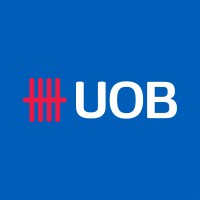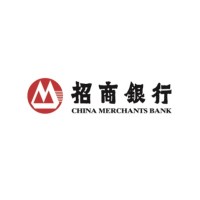Company Cyber Security Posture
NANA
NA Company Details
NA
NA
NA
NA
NA
NA
Scan still pending
NA
NA
Between 200 and 800
This score is AI-generated and less favored by cyber insurers, who prefer the TPRM score.
 NA Global Score
NA Global Score.png)

Company Scoring based on AI Models
| Model Name | Date | Description | Current Score Difference | Score |
|---|---|---|---|---|
| AVERAGE-Industry | 03-12-2025 | This score represents the average cybersecurity rating of companies already scanned within the same industry. It provides a benchmark to compare an individual company's security posture against its industry peers. | N/A | Between 200 and 800 |
Company Cyber Security News & History
| Entity | Type | Severity | Impact | Seen | Url ID | Details | View |
|---|
Company Subsidiaries

NA
Access Data Using Our API

Get company history
.png)
NA Cyber Security News
Aussie "Big Four" banks cut rates, mirroring central bank
Feb 18 (Reuters) - Australian "Big Four" lenders cut their interest rates by 25 basis points on Tuesday, in tandem with the central bank ...
One on One: Central Bank CEO Luther Deaton
Central Bank CEO Luther Deaton says feedback from customers is the most important metric. LUTHER DEATON Luther Deaton has served as president ...
World’s Safest Banks 2024: Commercial Top 50
For the commercial banking sector, continuous innovation, strong product development and customer service, and effective risk management are ...
Annual Cyber Threat Report 2023-2024
This year's report outlines the cyber threat posed to Australian governments, critical infrastructure, businesses and households. It shows how ...
Corporate Plan 2024/25
This corporate plan is prepared for 2024/25 in accordance with section 35(1)(b) of the Public Governance, Performance and Accountability Act ...
Rising Cyber Threats Pose Serious Concerns for Financial Stability
Greater digitalization and heightened geopolitical tensions imply that the risk of a cyberattack with systemic consequences has risen.
Commonwealth Bank of Australia's Shares Hit New Intraday Record Ahead of Central Bank Rate Decision
Commonwealth Bank of Australia is an Australia-based bank that focuses on providing retail and commercial banking services predominantly in Australia, and in ...
The Failure of the Bank of the Commonwealth: An Early Example of Interest Rate Risk
Faced with Commonwealth's impending failure, unable to find an acquiring bank because of state branching restrictions, and unwilling to allow a ...
Who Uses CrowdStrike? List of Banks, Apps Affected by Outage
Many companies across the world were affected by a cyber outage Friday morning following a software update that went awry.

NA Similar Companies

UniCredit
UniCredit exists to empower communities to progress. To deliver for all our stakeholders across Europe and unlock the potential within each individual and community we serve. We are a pan-European bank: our 13 banks across the continent work together as one, leveraging the strength of the collectiv

UOB
We’re here to do Right By You. At UOB, we aspire to build a better future for the people and businesses in the region. Through our extensive network and suite of capabilities, we offer financial solutions to the people and businesses within, and connecting with ASEAN. We create solutions tail

China Merchants Bank
Established in 1987 in Shenzhen, the forefront of China’s reform and opening-up drive, China Merchants Bank ("CMB") has developed into the most influential commercial bank brand in China thanks to continuous financial innovation, quality customer service, prudent management and strong business perfo

KBZ Bank
KBZ Bank, established in 1994, is the largest privately owned bank in Myanmar and the first to have expanded internationally, with representative offices in Singapore, Thailand and Malaysia. With 18,000 staff, more than 480 branches nationwide and 40% market share of both retail and commercial banki

PrivatBank
PrivatBank is the largest state-owned bank of Ukraine. The Bank serves over 18 million active customers, while over 70% of Ukrainians use its services. The Bank is the leader in retail, introduces new and upgrades existing services for small and medium businesses, has created a strong digital ecosys

Bank Saderat Iran
As a private bank , BSI was established in 1952 . with around 3000 active branches , BSI runs the largest banking network in Iran . In 2000 , BSI started offering electronic online services , and now pioneers in the number of online branches ATM . machines , and point of sale terminals with remarkab

Frequently Asked Questions
Explore insights on cybersecurity incidents, risk posture, and Rankiteo's assessments.
NA CyberSecurity History Information
How many cyber incidents has NA faced?
Total Incidents: According to Rankiteo, NA has faced 0 incidents in the past.
What types of cybersecurity incidents have occurred at NA?
Incident Types: The types of cybersecurity incidents that have occurred include .
Additional Questions
What Do We Measure?
















Every week, Rankiteo analyzes billions of signals to give organizations a sharper, faster view of emerging risks. With deeper, more actionable intelligence at their fingertips, security teams can outpace threat actors, respond instantly to Zero-Day attacks, and dramatically shrink their risk exposure window.
These are some of the factors we use to calculate the overall score:
Identify exposed access points, detect misconfigured SSL certificates, and uncover vulnerabilities across the network infrastructure.
Gain visibility into the software components used within an organization to detect vulnerabilities, manage risk, and ensure supply chain security.
Monitor and manage all IT assets and their configurations to ensure accurate, real-time visibility across the company's technology environment.
Leverage real-time insights on active threats, malware campaigns, and emerging vulnerabilities to proactively defend against evolving cyberattacks.




